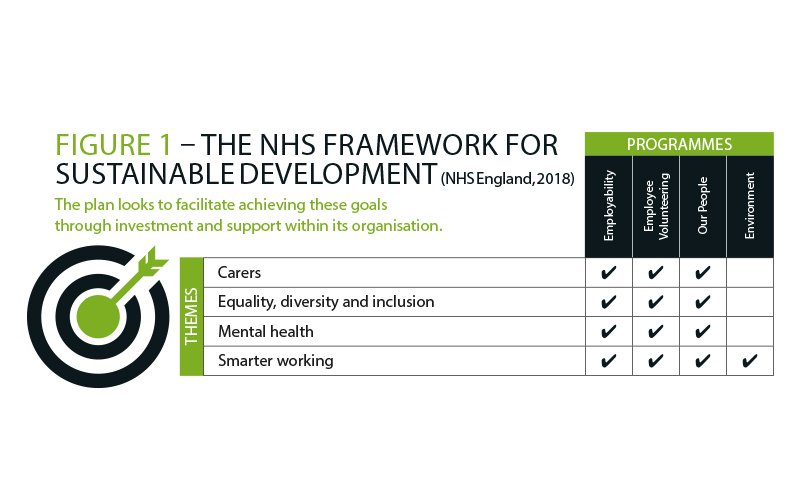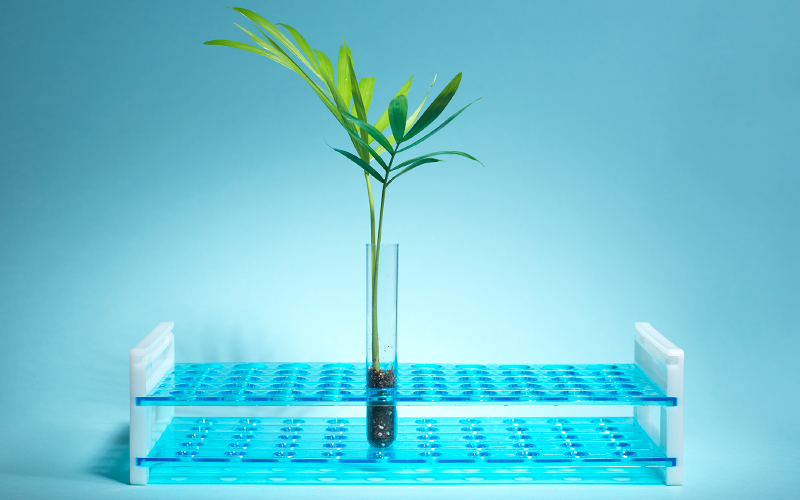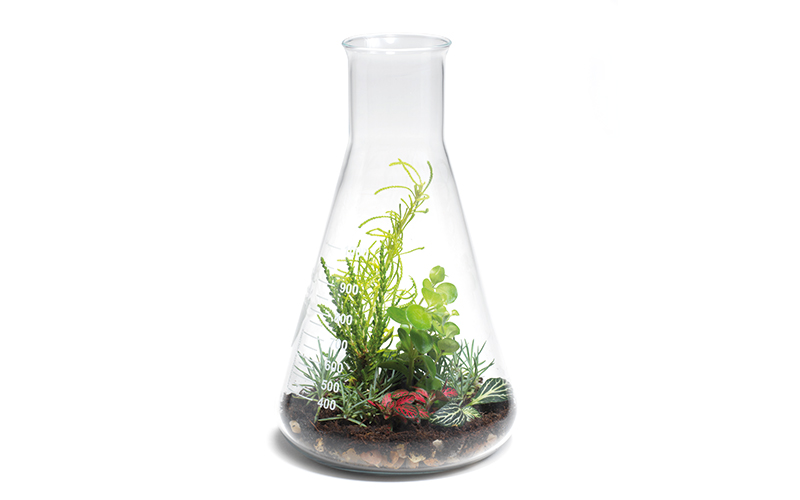What environmental issues do labs face and what actions can be taken to try and increase sustainability? Senior Lecturer in Biomedical Science Sheri Scott looks at the issue.

The fundamental objective of our NHS is to save and improve lives. Through practice, education and delivery it aims to heal the sick and care for those in need. It is well documented that our changing climate is leading to more frequent heatwaves and extreme weather events, such as flooding, with increasingly reported extremes appearing in our news headlines. There is also growing evidence for the health impacts of climate change and air pollution such as increased levels of heart disease, stroke and lung cancer and the potential increased spread of infectious diseases.
Evidence from Public Health England reports that in the UK during the heatwaves of the past two summers, climate change was responsible for approximately 900 yearly deaths. As healthcare professionals, we have accepted that these climate events are impacting on the health of the world and we recognise that the need for change has never been stronger.
We need to move towards a more sustainable future – our resources are not infinite; furthermore, there are recognised imbalances and inequalities in wealth, education and minority groups. We need to embed sustainability in our practice, to achieve the necessary balance between the environment, equity, and economy.
Development goals
The United Nations Sustainable Development Goals (SDGs) are 17 global goals introduced in 2015 to replace the Millennium Development Goals. The goals form part of the United Nation’s Sustainable Development Agenda, which has ambitious aims to end poverty, protect the planet and ensure prosperity for all through impacts on the environment, people and practices. Each of the goals has specific targets that nations are working together to achieve over the next 15 years.
Sustainable management plan
NHS England has developed an approach tailored to the 17 SDGs. It has published the paper Agenda 2030: Delivering the Global Goals, with a direct aim to ensure its work contributes to the national and global efforts towards a more sustainable future.
The plan encompasses four key themes embedded into four programmes. These themes look to support employees as carers, achieve diversity in the workplace, consider and maintain good mental health and promote smarter working by encompassing efficiency and effectiveness.
The “employability programme” is about creating opportunity. It links to no poverty, quality education, decent work and economic growth and reduced inequalities. The “employee volunteering programme” is about creating opportunities for colleagues. It also covers the goals of no poverty, zero hunger, quality education, decent work and economic growth. The “our people programme” links no poverty, good health and wellbeing, gender equality and reduced inequalities, while the “environment programme” encompasses sustainable cities and communities, responsible consumption and production and climate action.
A net-zero health service
In 2020 the NHS became the world’s first national health system to commit to becoming a “carbon net zero” organisation. This was backed by a number of clear objectives with suggested milestones. The commitment aimed to save and improve lives. The report Delivering a net zero health service details the clear ambition and target for the NHS. The report describes advances that the NHS has made in response to climate change, and describes the direction, scale, and change required to drive the plan forward. Trusts are adopting these strategies by recognising the fine line between balancing financial, social and environmental priorities. Staff environment groups are driving forward initiatives, such as recycling, reuse schemes, litter picking and vegan food options, as just some of the mechanisms to meet these needs.
Green universities
Along with the NHS, universities are also committing to the SDGs. In 2016, Nottingham Trent University was one of the first universities globally to integrate the SDGs into the curriculum. There is a dedicated team that helps ensure graduates are prepared with the right competencies, knowledge and skills to work towards a better future. The university has introduced efficient ways to manage resources, introduced cost-effective and safe technologies, designed sustainable agriculture innovations, investigated ways to encourage greener cities and considered methods to reduce unnecessary consumption of energy and materials, by creating inspiring, sustainable and welcoming campuses. The aim is to share this culture with the students, empowering graduates to develop and implement this ethos into their professional and personal lives. This includes:
- Improving public transport links and our bike hire scheme
- ISO 14001 certification since 2012
- Reducing our carbon emissions
- Collaborating with waste management specialists to reduce landfill and improve reusing and recycling.
- Operating ethically and sustainably
- Using Fairtrade products
- Introducing sustainable university policies and practice.

With recognised Green Awards, universities are sharing best practice and uniting to meet the SDGs.

In May, RCPath published its strategy for a sustainable future. This has launched a new drive for pathology sustainability. Working in healthcare, we are invested in reducing the damaging effects that climate change can have on the health of people in the UK and around the world. The strategy highlights three key strategic aims of the college, which hopes to encourage changes in both operations in their London headquarters and more broadly among pathologists across the sector.
The report acknowledges the destructive effects of climate change on society and the health of ourselves and our patients. The central message is overwhelmingly to “reduce, reuse, recycle”, targeting areas of the kitchen, the office and meetings.
Sustainability and the lab
In pathology we are starting to see recent graduates join the profession with more awareness, knowledge and ideas to facilitate changes within our laboratories. Trust initiatives and local campaigns are providing education, while the policies provide a drive to implement changes towards the SDGs.
During a recent student workshop, apprentices from across the country discussed local laboratory sustainable practices. Initiatives included the recycling of plastics, such as biochemistry/haematology reagent bottles, LED lighting with motion sensors, drives to turn off equipment and put computers in sleep mode and sustainability in the tender process.
The students also discussed the drive to replace UPS lead-based batteries with a more sustainable alternative and other more successful practices, including fundraising events involving healthy activities and the trust introduction of stress-free “wobble rooms”. There are varying successes with these initiatives and only by working to promote the SDGs can we achieve more.
I also invited the biomedical scientist and pathology Twitter community to share their own local sustainability efforts. In the column, left, some of the progress labs are making is outlined.
Despite all these fantastic policies and practices, it is worth considering that a large proportion of pathology tests ordered are thought to be unnecessary – between 12% and 44%, according to a 2013 meta-analysis. It is here that we truly need to focus our attention.
In a 2020 study, the carbon footprint of five common hospital pathology tests (full blood examination; urea and electrolyte levels; coagulation profile; C-reactive protein concentration; and arterial blood gases) was reviewed. This study concluded that sample collection and phlebotomy dominated the carbon footprint of these tests. Similar studies in our own pathology departments would be useful.
Through digital technology, education and training, we can have the biggest impact on the SDGs. It is worth noting that the goal of mental health and wellbeing and employee initiatives related to this goal were not considered in the Twitter responses. Climate change and the environment are important, but so are we.
Professional bodies
With regard to sustainability, leading by example has the greatest influence. The HCPC now wishes to “build a resilient, healthy, capable and sustainable organisation”. From investing in its employees to either producing digital resources or printing its publications using trees from sustainable forests.
In April, the IBMS changed its delivery packaging of The Biomedical Scientist, as part the drive to move away from single-use plastics, it now comes in sustainable wrapping, which can either be recycled or is biodegradable. The IBMS has moved to virtual verifications, more flexible working for its employees, virtual training and most recently a digital version of the registration portfolio and reports.

“The IBMS has moved to virtual verifications and more flexible working for its employees”
Professional registration with the Science Council now recognises sustainability within its standards, with RSci applicants required to evidence “Takes responsibility for quality, safe and sustainable working practices, contributing to their evaluation and improvement” and CSci applicants are required to provide evidence towards “Develops and implements policies and protocols relating to quality, health, safety and sustainability” and “Implements solutions with due regard to impact of work on organisation and wider environment”.We can see evidence from these initiatives, that changes towards sustainability practice are gaining momentum and there is a significant reason for this.

From Microsoft Teams to the NHS App, digital technology has had the highest impact on the SDGs to date. Nothing promotes change faster than a worldwide health crisis.The current pandemic has provided evidence on how quickly the earth can recover if permitted to do so. From clear water in the Venice canals to wild animals roaming the streets – lockdowns, although economically damaging, can be a positive sign in our fight for environmental recovery.The NHS and education institutions were forced to find alternative means of communication and continual professional development. The isolation and mental health impact of the pandemic promoted the introduction of wellbeing apps, calm spaces and support networks. Working from home and virtual meetings reduced the need for travel and the benefits of increased virtual learning opportunities, webinars and virtual assessments will be retained long after the pandemic becomes manageable. It is important to recognise the impact these advancements have made to SDGs of good health and wellbeing, quality education, climate action and more. But we mustn’t forget that equally the pandemic has impacted negatively on the SDGs of reducing inequalities and no poverty.
In summary
It is important to remember there are limited opportunities to reduce the carbon footprint of pathology testing, but to have the biggest positive impact on the environment, unnecessary testing needs to be reduced. We need to educate requesting professionals to consider not only the health outcomes of our patients but the environmental impact and cost-effectiveness of the tests when ordering. We need to embed sustainability into our accredited biomedical science curriculum and link this to training of our future biomedical scientists, considering how the standards of proficiency can be linked to sustainability. We need to embrace the positive impact of digital technology with regard to meetings and assessments and work together to conserve our resources, reduce our plastic use and help share our ideas to be more sustainable, but ultimately, we need to look after each other and ourselves.
Sheri Scott is a Senior Lecturer in Biomedical Science at Nottingham Trent University
Image credit |Richard-Gleed
